business planning course
A Business Planning Course is designed to equip entrepreneurs, small business owners, and aspiring founders with the skills and knowledge to create a strategic roadmap for their business. The course helps learners understand how to assess business ideas, set realistic goals, and prepare financial and operational plans that guide growth and attract investors.
What Is a Business Planning Course?
A Business Planning Course is an educational program that teaches individuals how to develop a formal business plan. It covers key areas such as market research, competitive analysis, financial projections, marketing strategies, operations planning, and goal setting. The course may be offered online or in-person and is often used by startup founders, students, and professionals who want to understand the mechanics of launching or growing a business.
Key Topics Covered in a Business Planning Course
A quality Business Planning Course typically covers the following topics:
Business Model Development: Understanding different business models and choosing the right one
Market Research and Analysis: Identifying your target audience and analyzing the competition
SWOT Analysis: Evaluating strengths, weaknesses, opportunities, and threats
Marketing Strategy: Creating plans to promote products or services
Financial Planning: Budgeting, forecasting, and setting financial goals
Operational Planning: Defining processes, logistics, and team structure
Benefits of Enrolling in a Business Planning Course
Some key benefits include:
Improved decision-making based on data and planning
Increased confidence when presenting ideas to investors
Better understanding of how to structure and grow a business
Access to expert feedback and networking opportunities
Hands-on tools like business plan templates and financial calculators
Overview
People credited with this unit standard can describe different approaches to problem-solving. Logical problem solving and error detection are essential skills in computing, software development, systems analysis, and many areas of professional IT and business environments. Together, they enable individuals and teams to identify, analyze, and resolve issues effectively and efficiently.
Description
People credited with this unit standard can describe different approaches to problem-solving. Use logical operations in descriptions of rules and relationships in problem situations. Simplify Boolean expressions with Boolean Algebra and Karnaugh maps. Describe the basic concepts of error detection.
- The description identifies the different problem-solving techniques.
- The description identifies situations where specific problem-solving techniques would be more suitable than others.
- The description utilises the top-down problem-solving approach in real-life problems known to the learner.
- The description allows for the practice of problem breakdown in picture drawing applications.
- Usage describes logical operators by drawing truth tables.
- Usage provides examples of problem situations where a specific operator can be used.
- Usage identifies which of the operators should be used to represent given situations.
- Usage combines different operators to form Boolean expressions by setting up truth tables.
- The simplification describes the rules of Boolean algebra.
- The simplification uses the Boolean algebra rules to simplify given expressions.
- The simplification using Karnaugh maps to represent Boolean expressions.
- The simplification involves writing down the simplified expression from the map.
- The description identifies the common causes of errors.
- The description identifies error isolation techniques
- The description identifies various testing techniques.
- Non-accredited: Short course only
- Duration: 1h 30m
- Delivery: Classroom/Online/Blended
- Access Period: 12 Months

